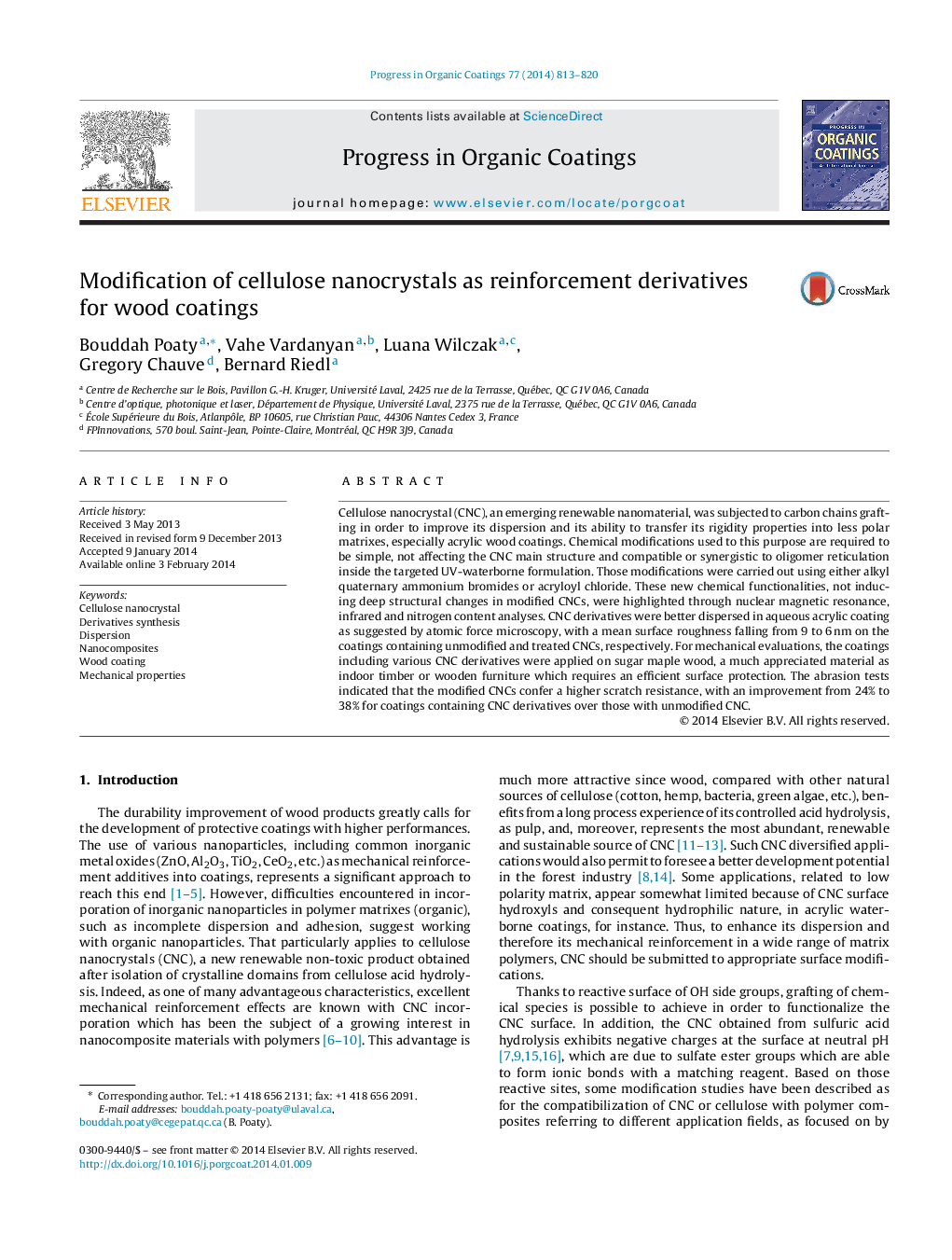| Article ID | Journal | Published Year | Pages | File Type |
|---|---|---|---|---|
| 692516 | Progress in Organic Coatings | 2014 | 8 Pages |
Abstract
Cellulose nanocrystal (CNC), an emerging renewable nanomaterial, was subjected to carbon chains grafting in order to improve its dispersion and its ability to transfer its rigidity properties into less polar matrixes, especially acrylic wood coatings. Chemical modifications used to this purpose are required to be simple, not affecting the CNC main structure and compatible or synergistic to oligomer reticulation inside the targeted UV-waterborne formulation. Those modifications were carried out using either alkyl quaternary ammonium bromides or acryloyl chloride. These new chemical functionalities, not inducing deep structural changes in modified CNCs, were highlighted through nuclear magnetic resonance, infrared and nitrogen content analyses. CNC derivatives were better dispersed in aqueous acrylic coating as suggested by atomic force microscopy, with a mean surface roughness falling from 9 to 6Â nm on the coatings containing unmodified and treated CNCs, respectively. For mechanical evaluations, the coatings including various CNC derivatives were applied on sugar maple wood, a much appreciated material as indoor timber or wooden furniture which requires an efficient surface protection. The abrasion tests indicated that the modified CNCs confer a higher scratch resistance, with an improvement from 24% to 38% for coatings containing CNC derivatives over those with unmodified CNC.
Related Topics
Physical Sciences and Engineering
Chemical Engineering
Process Chemistry and Technology
Authors
Bouddah Poaty, Vahe Vardanyan, Luana Wilczak, Gregory Chauve, Bernard Riedl,
